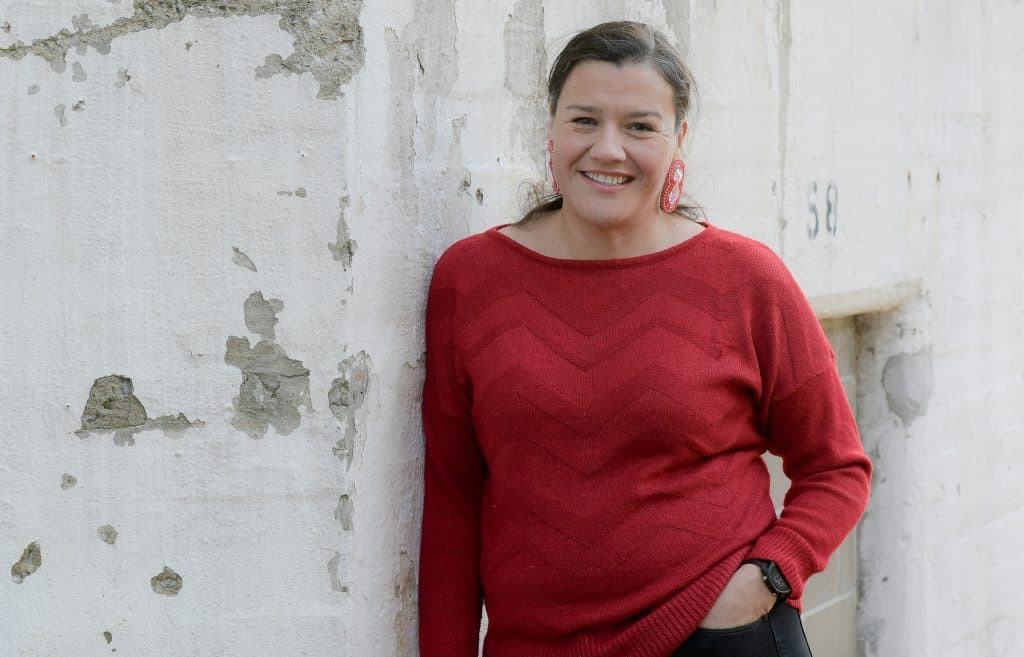Voices of Hennepin Healthcare: Angela Hirsh

Angie Hirsch, LICSW, an American Indian mental health coordinator, advocates for integrating traditional American Indian and Western models of medicine for culturally affirming care.
“Hennepin Healthcare is in a unique position because they serve everybody,” says Angie Hirsch, LICSW, the American Indian mental health clinical coordinator for the Behavioral Health Division of the Minnesota Department of Human Services (MDHS). Hennepin Healthcare provides care to many of the 500+ tribes located in Minnesota, as well as members of tribes from around the country that reside in Hennepin County. Before the pandemic, Angie traveled twice a month to local tribal communities to develop better mental health policies and practices for American Indian people.
As Hennepin Healthcare continues its innovative planning process to advance health equity, Angie recommends an approach that incorporates traditional healing methods as primary practice, addresses the reality of complex trauma caused by colonization and integrates culturally affirming care into every patient experience.
Traditional Medicine as Primary Mental Health Practice
Wellness, in many American Indian traditions, is represented through the medicine wheel: a circle with four quadrants representing a person’s spiritual, emotional, physical and mental health. “We are always trying to be balanced in all four areas,” Angie explains.
Angie has experienced that traditional Western treatments for mental health are often ineffective for American Indian patients. The Western medicinal model distinguishes mental, emotional, physical, and spiritual health into specialties, often neglecting their connection. “It’s hard to talk about mental health as a separate thing because we just don’t see it like that,” Angie explains.
Instead, Angie recommends that healthcare supports her community as they “find their way back to their traditional” practices. “There are some things that Western medicine can’t do. The spiritual quadrant of the medicine wheel is about how we view ourselves, [including] belonging and healthy self-esteem. We can get that from our traditional ways.”
To heal the divide between Western medicine and American Indian practices, Angie wishes that “Western healthcare would be more willing to incorporate traditional healing, making it primary and Western practice supplemental.”
Understanding Complex Trauma Caused by Colonization
“Society depicts native people in a way that puts native people as ‘lesser than’ instead of emphasizing all of the strengths and contributions native people have made and continue to make.” Angie shares. “No one can exist within the American Indian community without being touched by those things.”
Angie observes that many American Indian people “aren’t getting what they need from the Western way” of managing mental wellness. Most often, mental health issues are diagnosed without the physician exploring the root of the problem. For example, depression and anxiety are common mental health disorders experienced by the American Indian population due to traumatic events that began with colonization and continue with the mistreatment of people today. “Without healing the trauma, we cannot treat the depression,” Angie shares.
The Integration of American Indian and Western Medical Practice
As a clinical social worker, Angie has learned to bridge the gap between Western and American Indian mental health practices and believes that Hennepin Healthcare has the potential to do so as well. “Being able to work with the community to make [their health] experiences more culturally meaningful and having the facility reflect that would be amazing,” she dreams.
“Our most sacred populations are babies and our elders, because they are closest to the spirit world” she concludes. “We value birth and death — and healthcare has a really unique role in being part of both. A focus on making these experiences more culturally meaningful for American Indian patients would go a long way.”
“Hiring more native doctors and nurses, people who work there on staff and care teams would make a huge difference,” Angie continues. Additionally, she recommends creating a “place [where] they can smudge and pray where a medicine person or an elder can come.”
At its core, Angie’s vision is a healthcare system that offers a “variety of healing options that patients can choose what is best for them.”
Learn more about the planning process and sign up for monthly updates from Jennifer DeCubellis, CEO at HennepinHealthcare.org/ourfuture.

